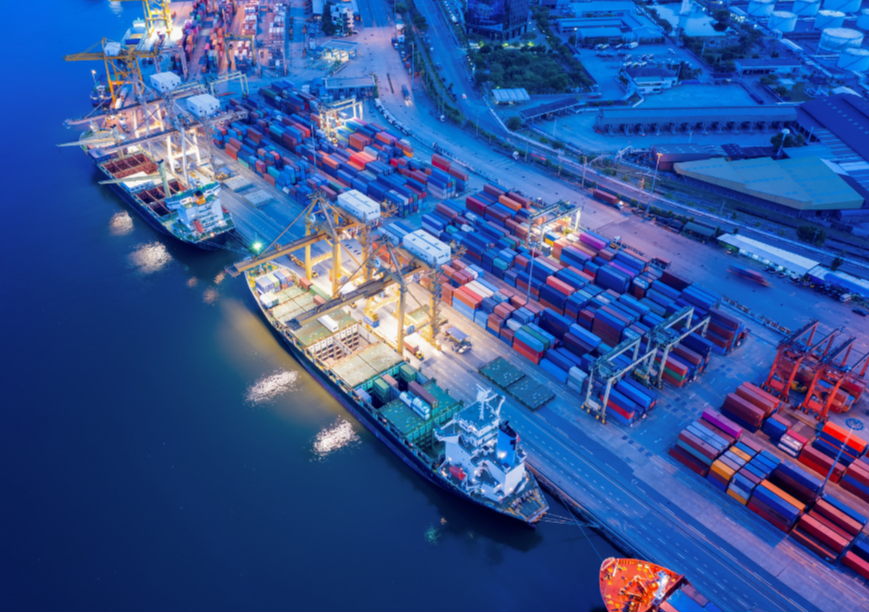-
CENTRES
Progammes & Centres
Location
The Bay of Bengal presents an opportunity for Bangladesh and Thailand to enhance bilateral trade through their shared maritime space, making a Chattogram-Ranong connection highly beneficial.

As coastal nations, Bangladesh and Thailand rely on efficient and well-established port connectivity for their economic prosperity. Bangladesh is located towards the north of the Bay of Bengal, while Thailand forms the eastern coast of the adjacent Andaman Sea. Both countries, therefore, have the opportunity to boost their bilateral trade via this shared maritime space. Recent efforts to realise this potential were made during the recent six-day visit to Bangkok by Bangladeshi Prime Minister Sheikh Hasina. The discussions between the two leaders focused on implementing a direct shipping line between Chattogram Port in Bangladesh and Ranong Port in Thailand, building on a Memorandum of Understanding (MoU) signed between the two countries in December 2021.
Located in southeastern Bangladesh, the Chattogram Port is the country’s principal port, handling over 90 percent of its maritime commerce. It is the busiest port in the Bay of Bengal and the only one from the region to be featured in Lloyd’s list of the top 100 ports of the world. The Ranong Port is Thailand’s only port along the Andaman Sea, thereby connecting it to the Bay of Bengal. Thailand is developing Ranong to improve its connectivity with other littorals of the Bay, particularly India’s Andaman and Nicobar Islands. Bangladesh's exports to Thailand are currently transhipped through the ports of Singapore, Port Kelang in Malaysia, and Colombo in Sri Lanka, taking up to 10 days. Establishing direct shipping between these ports will help reduce transportation time to three days and lower shipping expenses by an estimated 30 percent. Local private companies can operate bulk carriers and container ships with a 7-meter draught and a capacity of 10,000 tonnes or 20-foot equivalent units, on this route.
The direct shipping link has the potential to boost both trade and tourism between Bangladesh and Thailand as both countries are keen on increasing their commercial exchange. In this regard, a letter of intent to begin negotiations for a Free Trade Agreement (FTA) this year was signed during PM Hasina’s April visit. The FTA will boost bilateral trade by helping overcome a trade deficit that exists because Bangladesh imports more from Thailand than its exports. For example, in 2022, Bangladesh exported goods worth US$83 million to Thailand, but imports from the country reached US$1.17 billion.
The direct shipping link has the potential to boost both trade and tourism between Bangladesh and Thailand as both countries are keen on increasing their commercial exchange. In this regard, a letter of intent to begin negotiations for a Free Trade Agreement (FTA) this year was signed during PM Hasina’s April visit.
While the direct shipping link will be initially used to facilitate this trade, it will also be opened for passenger service in the future. This will benefit the tourism sector, which is a major area of cooperation between the two countries. Thailand attracts a substantial number of tourists from Bangladesh each year and is also a favoured destination for medical tourism. In 2019, about 140,000 Bangladeshis visited Thailand for tourism, with 4,300 of them seeking medical treatment, contributing approximately US$182 million to the Thai economy. Accordingly, both countries are eager to increase cooperation in this sector which explains the three MoUs that were signed during PM Hasina’s visit; one on tourism; one on visa exemption for official passport holders; and one on cooperation and mutual assistance in customs matters. In the future, tourism can be further increased by joint initiatives to promote the Buddhist circuit.
Beyond enhancing commerce and people-to-people connectivity, establishing direct shipping between Ranong and Chattogram also holds strategic advantages for both countries. For Thailand, a strong connection with Chattogram offers the opportunity for improved trade with Nepal, Bhutan, and Northeast India which form the port’s hinterland. Dhaka, on the other hand,is eager to strengthen its ties with Southeast Asia and is counting on Thailand’s support for its bid to join the Mekong-Ganga Cooperation Forum and gain Sectoral Partnership status with the Association of Southeast Asian Nations (ASEAN) to help resolve the Rohingya issue.
Beyond enhancing commerce and people-to-people connectivity, establishing direct shipping between Ranong and Chattogram also holds strategic advantages for both countries. For Thailand, a strong connection with Chattogram offers the opportunity for improved trade with Nepal, Bhutan, and Northeast India which form the port’s hinterland.
Additionally, the direct shipping route gives Bangladesh potential access to the Pacific Ocean via the Thai Prime Minister’s flagship ‘Landbridge’ project, a crucial part of which is the Ranong Port. The Landbridge initiative replaces the earlier idea of constructing a canal across Kra Isthmus in southern Thailand with a transportation corridor comprising highways and railways, connecting the Andaman Sea with the Gulf of Thailand. This corridor will facilitate the movement of goods and people between the Indian Ocean and the Pacific Ocean without navigating the congested and strategically sensitive Strait of Malacca. If operationalised, the Landbridge will also boost the Bay of Bengal’s commerce, along with the Ranong and Chattogram direct shipping link. This is because India and Bangladesh already share a Coastal Shipping Agreement by which the Chattogram Port trades directly with the Kolkata and Chennai ports and the BIMSTEC Master Plan on Connectivity (2022) envisages the creation of direct shipping links between Thailand’s Ranong Port and the ports of Chennai and Colombo.
However, despite the many advantages of the direct shipping route, there are diplomatic sensitivities that both Bangladesh and Thailand will need to address in its implementation. Foremost is Myanmar's political instability resulting from the clashes between the ethnic communities and the military Junta in the coastal province of Rakhine, which lies midway between Chattogram and Ranong. This factor has contributed to the long delay in implementing the direct shipping link despite talks to initiate it beginning as early as 2016. This will have to be diplomatically addressed for the link to become functional.
However, despite the many advantages of the direct shipping route, there are diplomatic sensitivities that both Bangladesh and Thailand will need to address in its implementation.
The other challenge stems from China’s growing footprint in the Bay of Bengal region. In recent years, there has been a surge of Chinese investments in Bangladesh and the Thai Landbridge project is ideally suited to address Beijing’s Malacca Dilemma. In February 2024, the Asian Infrastructure Investment Bank headquartered in China expressed its interest in developing this project. China’s investments in developing the Chattogram Port and its efforts in constructing the Landbridge will make the direct shipping link between Chattogram and Ranong a key component of the Chinese Belt and Road Initiative (BRI) as both Bangladesh and Thailand are members of the BRI. This will be disconcerting for India and other Indo-Pacific countries interested in maintaining the status quo of power equations in the Bay, as it will increase China’s presence in this maritime space. In the past, both Bangladesh and Thailand have had strong relations with both India and China. Their diplomatic prowess will be further tested as efforts are made to implement the direct shipping link.
Nonetheless, as Bangladesh aims for more economic prosperity to rise above its Least Developed Country (LDC) status by 2026 and emerge as a middle-income nation by 2031, the shipping line will be of high commercial value. For Thailand, the route offers an opportunity to increase its trade with South Asia, especially as it tries to diversify its commercial linkages beyond China. The key to realising the shipping link's optimal functionality, therefore, lies in making the link an integral part of the Bay of Bengal's regional trading network and arriving at a balance between economic aspirations and diplomatic sensitivities.
Sohini Bose is an Associate Fellow at the Observer Research Foundation.
The views expressed above belong to the author(s). ORF research and analyses now available on Telegram! Click here to access our curated content — blogs, longforms and interviews.

Sohini Bose is an Associate Fellow at Observer Research Foundation (ORF), Kolkata with the Strategic Studies Programme. Her area of research is India’s eastern maritime ...
Read More +